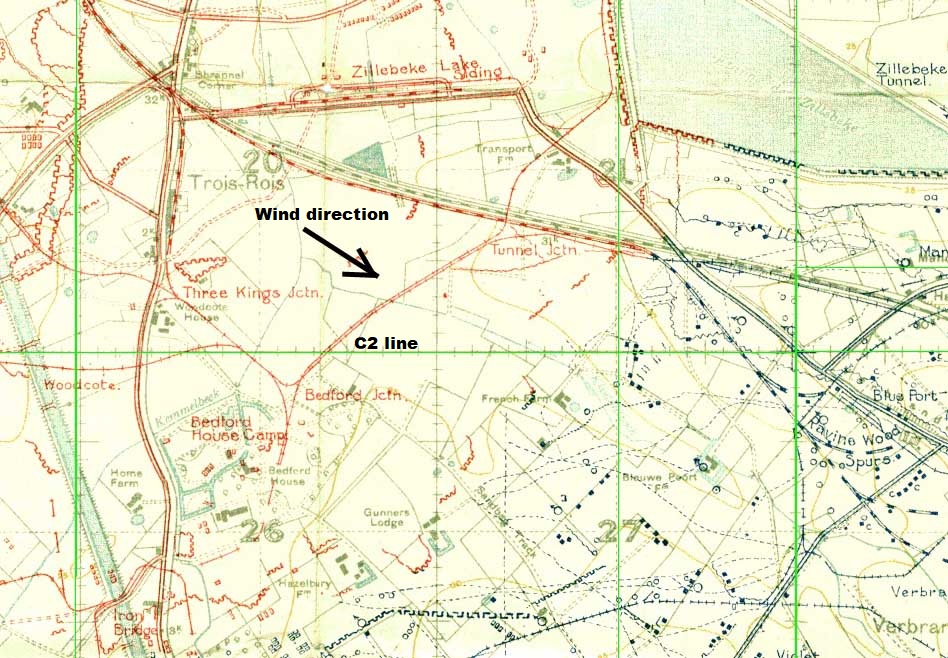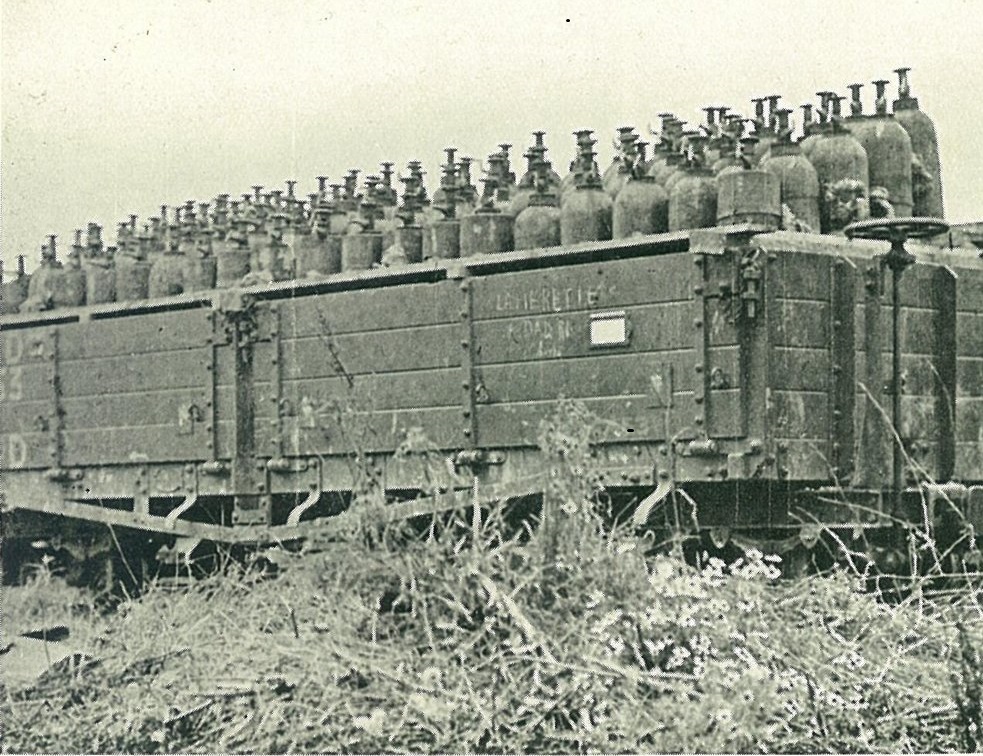On 27th August 1918, the caps of 2517 cylinders of a mixture of chlorine and phosgene gas, loaded on 63 railway trucks, were blown open by electrical charge, to create a “gas beam”. This then rolled slowly with the prevailing wind over the German positions in the valley of the Blauwpoortbeek, aimed at wearing down the enemy with a night in their gas masks and death to the unwary.
The British Army has a special unit of the Royal Engineers charged with gas operations, and in 1918 they had been busy with a new way to wear down the enemy, the “beam attack”. Eight such discharges preceded this one, postponed since the summer. Here south of Zillebeke Lake, an ideal light railway line had been identified, parallel to the enemy front. It was known as the C2 line, and in July the engineers waited with their long train of cylinders for the prediction of a East North-East wind. However none came.

In late July, the American 30th Division took over this sector. Still, the Royal Engineers were busy with their plan, and helped by the US 105th Engineers, the 63 railway trucks were run out by hand along the C2 line in the night of the 26th August 1918, while the front line troops were quietly withdrawn. What does such a truck look like?

All went to plan. Most of the cylinders discharged their contents. The gas washed slowly over the scattered craters occupied by German forward troops, reaching a fan shape from Zillebeke village in the north, Verbrandenmolen and up the edge of the Palingbeek ridge. While all appeared satisfactory to the Royal Engineers, research has turned up the fact that beyond firing off some coloured warning rockets, the Germans did not suffer enough casualties to indicate that they noticed much different about the early morning of 27th August. However at the north end of the C” line a rather different picture emerged. Gas blew back under the train and over a platoon of the US 105th Engineers (by ‘Tunnel Junction’ on the map). They tried to run but became entangled in barbed wire obstructions resulting in six dead and the other nine in hospital with gas poisoning, as the intense cloud overwhelmed their gas mask filters.